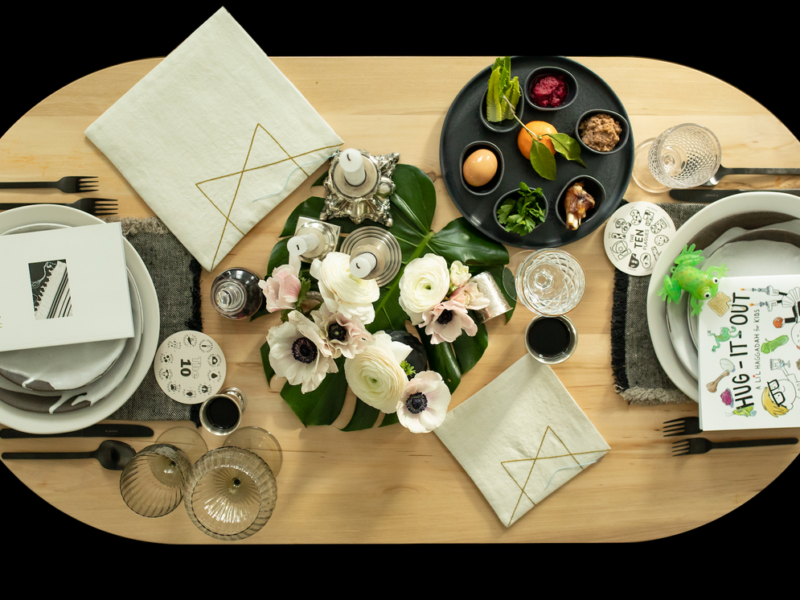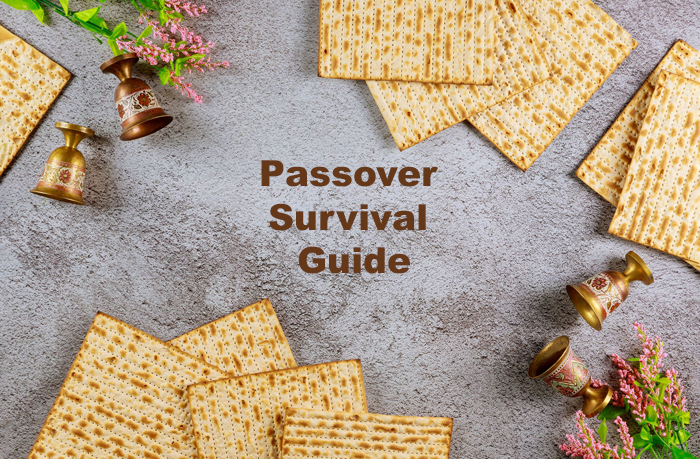
PHOTO: Yonatan Razel at the piano, his instrument of choice. PHOTO BY OHAD ROMANO
As I was thinking about the upcoming Passover preparations, two distinct thoughts entered my mind. This year, I want to share two recommendations for Passover.
1) We all have our favorite Passover seder melodies. If we are guests at a seder where they sing a different melody to that passage of the Haggadah, then it just doesn’t feel right.
Sometimes even within one family there can be competing “must sing” versions of the same passage. Often the solution is to sing both versions. Something incredible, however, has happened to one traditional song of the Haggadah: a competing contemporary melody has succeeded in making it into many homes without having to settle for equal billing with the traditional melody. The new melody has totally displaced the old.
I am speaking of the passage “Vehi She’amdah.”
In 2009, American-born Israeli singer and songwriter Yonatan Razel created a new melody to “Vehi She’amdah” (“And it was this that has stood for our parents and for us”). He then teamed up with American Hassidic singer Yaakov Shwekey. It became a smash hit not only for Passover and not only for religious communities, but all across Israel. What makes Razel’s rendition so wonderful? As a way of answering this question, we can first consider why the traditional (Ashkenazi) melody held sway for so long. The old melody sounds remarkably close to a work song, which is what we are expecting in this part of the Haggadah (the next passage speaks about how the Egyptians “persecuted us and put us under hard labor”). Thanks to the old melody, you can almost see the slaves groaning under their load of heavy bricks.
Along comes Yonatan Razel’s song, and suddenly we realize that the words of this passage don’t jibe with a slave’s work song.
In this song, we have a kind of broad take on Jewish history smack in the middle of the Haggadah’s narrative. Razel’s melody, which begins with a feeling of starstruck wonder, gives beautiful voice to the riddle behind “and this has stood.” Just what is “this?” What precisely has stood in our favor despite all our enemies? Answer: I’m not telling. It’s a mystery – and a good discussion starter for your seder.
It is the second part of Razel’s song, so climactic and so powerful, that sends the old melody to the history bins. Rather than a recapitulation of the beginning melody (as in the traditional version), Razel’s ending feels like some kind of resolution to the problem of theodicy (how evil can exist if God is all powerful and all good). God is present in the face of all of our enemies. God saves, and as evidence we are still here to sing about it.
The melody is so magical that (as in some of the recorded versions) many people repeat the song as a niggun, without the words – something no one was ever tempted to do with the old melody. If you have not yet adopted this song for your Passover seder, Rabbi Google will be more than happy to help you out.
2) At the end of Passover last year, my son, Elie, asked me, “Did you grow spiritually during the holiday?” And I was taken aback. Because in the middle of the many details of Passover, it’s easy to lose sight of this question. After all, Passover is a most demanding holiday. There is much cleaning to do in the days leading up to the holiday and the seder is a major production. The week of Passover cooking on Passover implements with Passover food can be quite challenging.
Amidst everything it is good to remember Elie’s question. I am a religious Jew, and I believe that all the holiday’s laws and details are indeed designed for some kind of spiritual benefit, some kind of deepening or uplift. If I go through the entire Passover holiday without thinking about my relationship with the divine, then I have missed something. So this holiday, I’m going to try to remember Elie’s comment beforehand and not after the fact, and I encourage you all to do the same.
Happy Passover.





